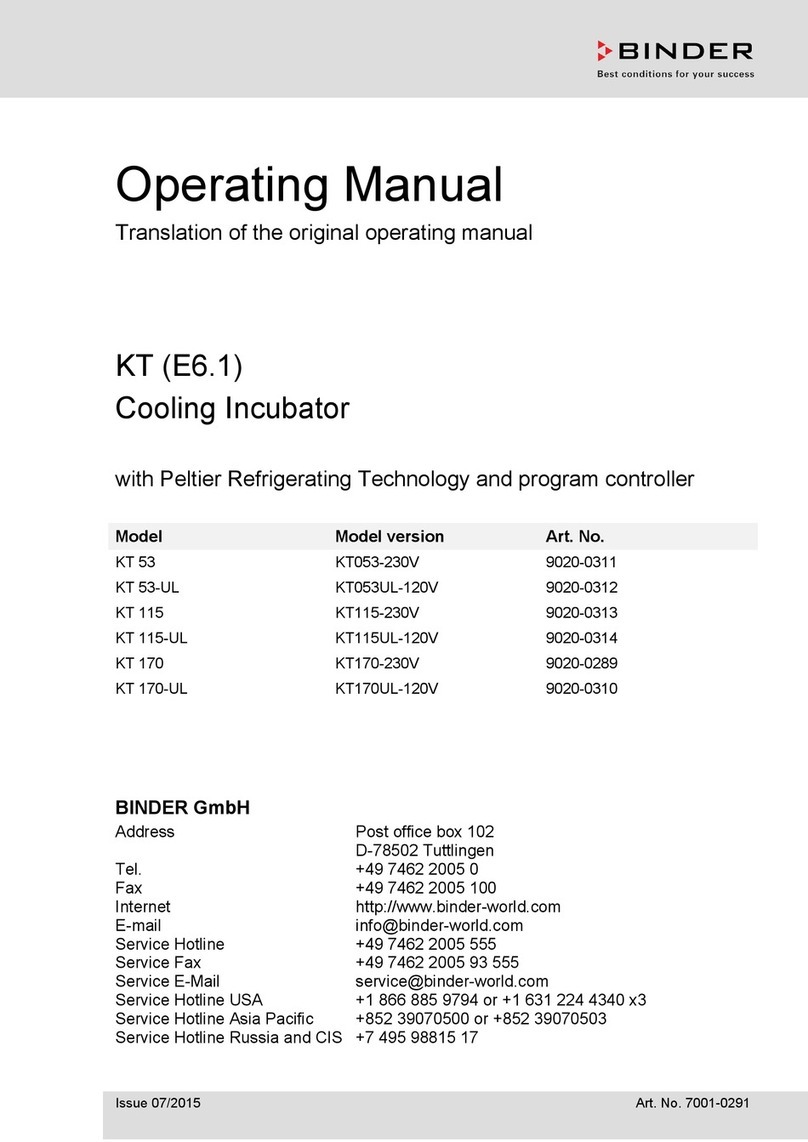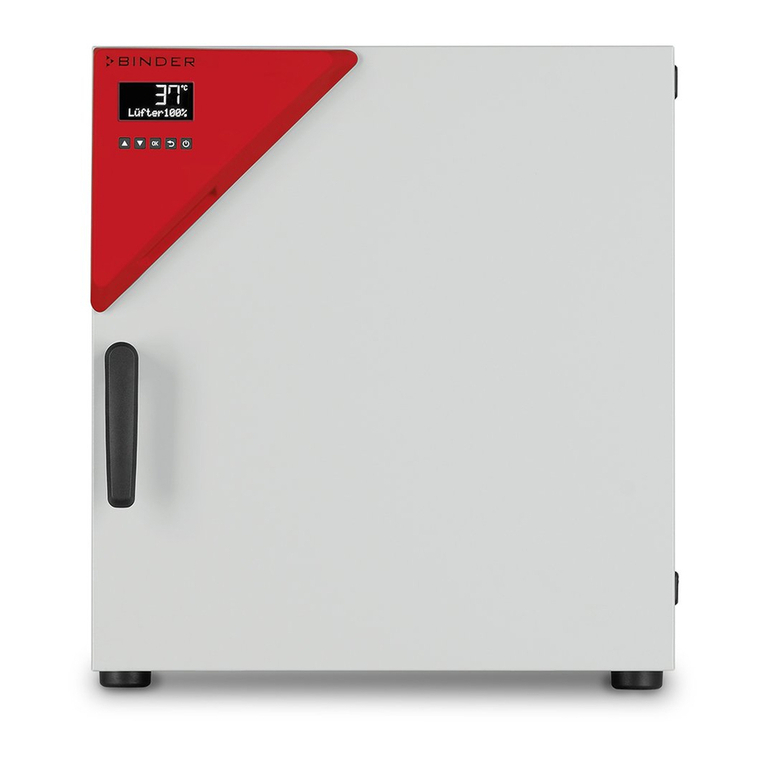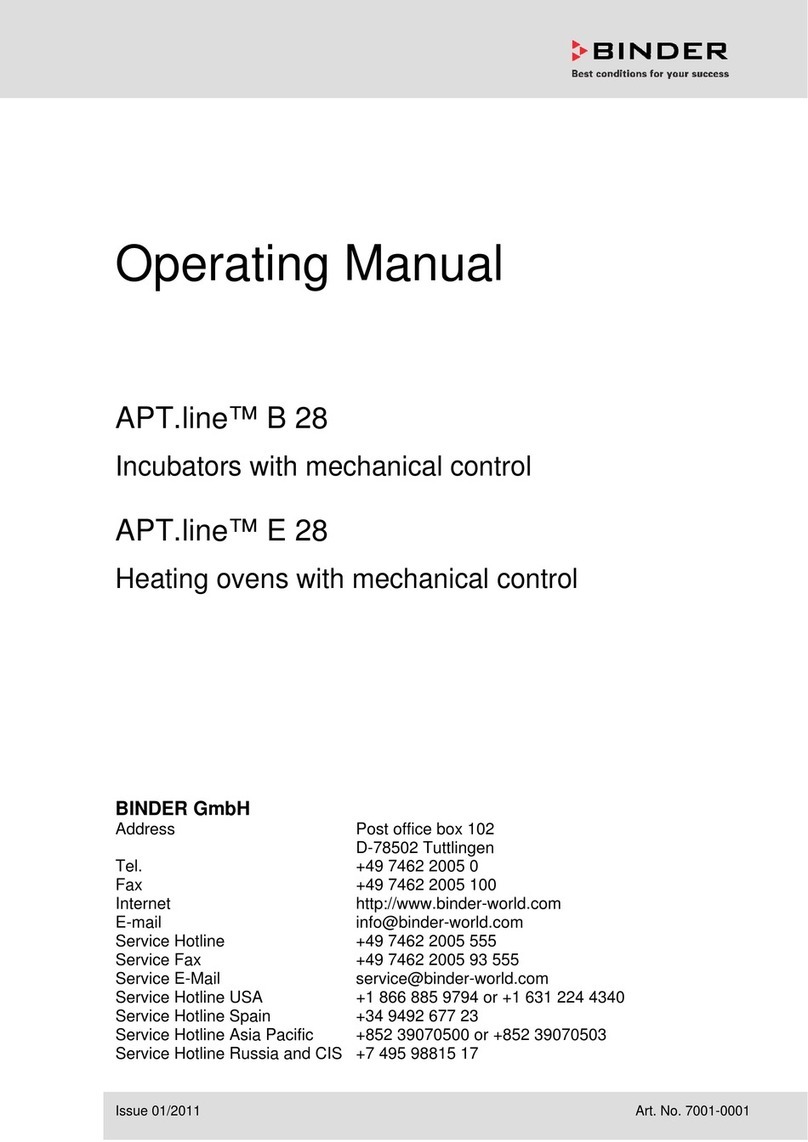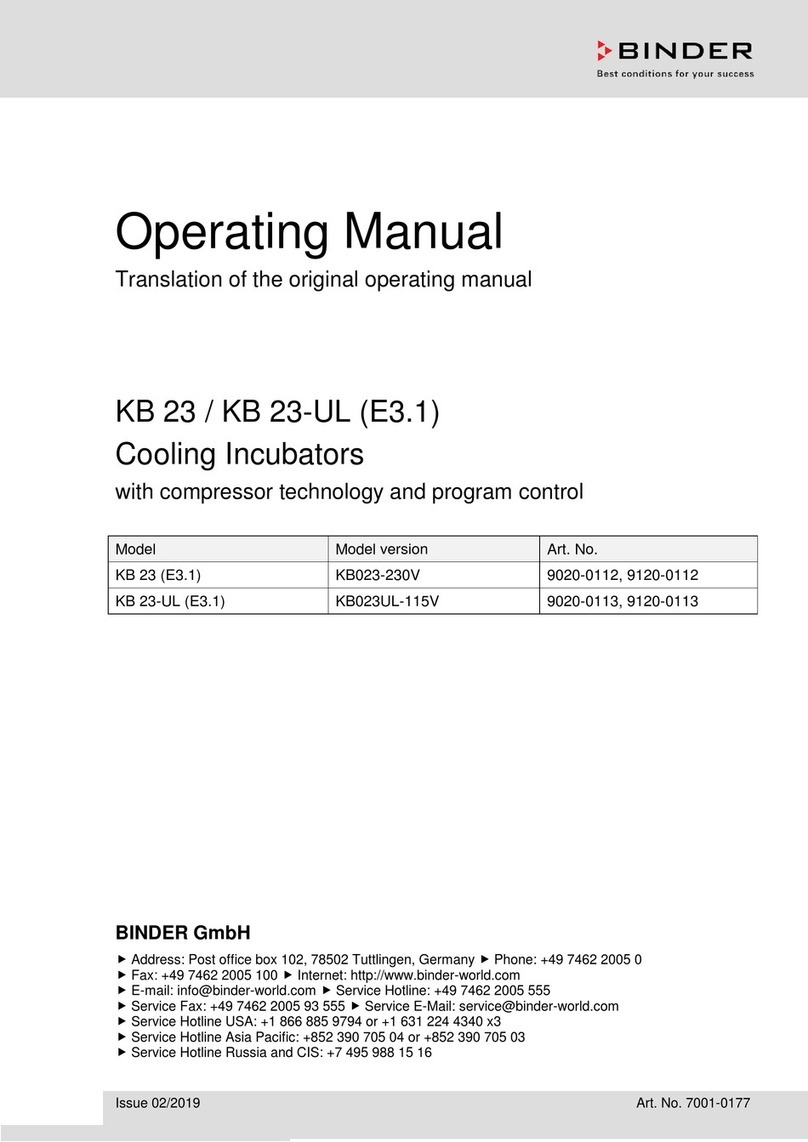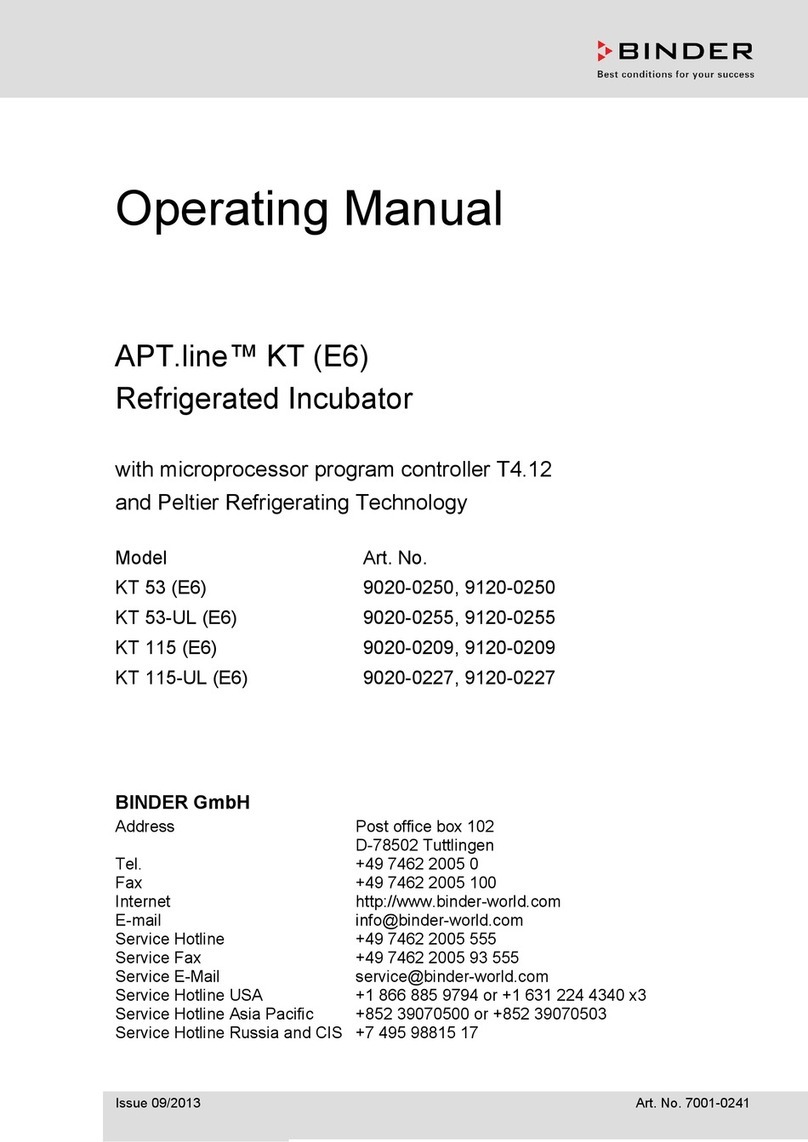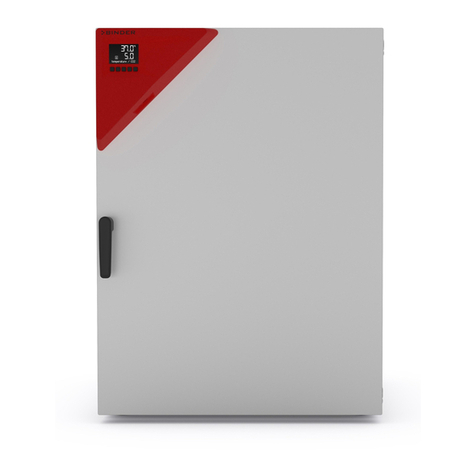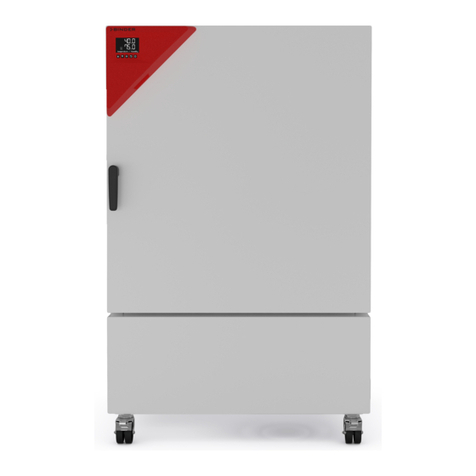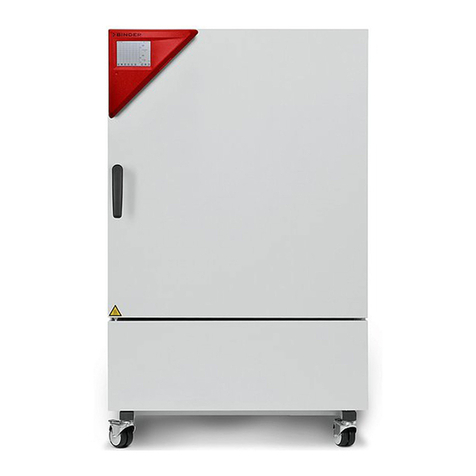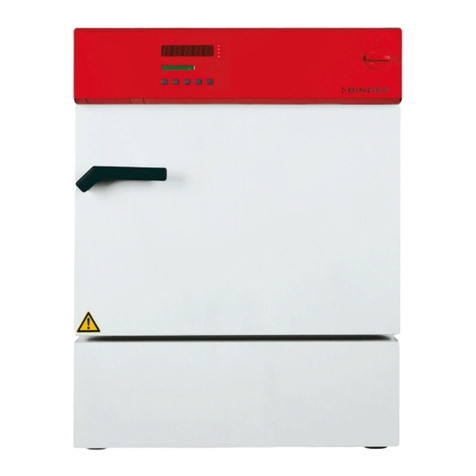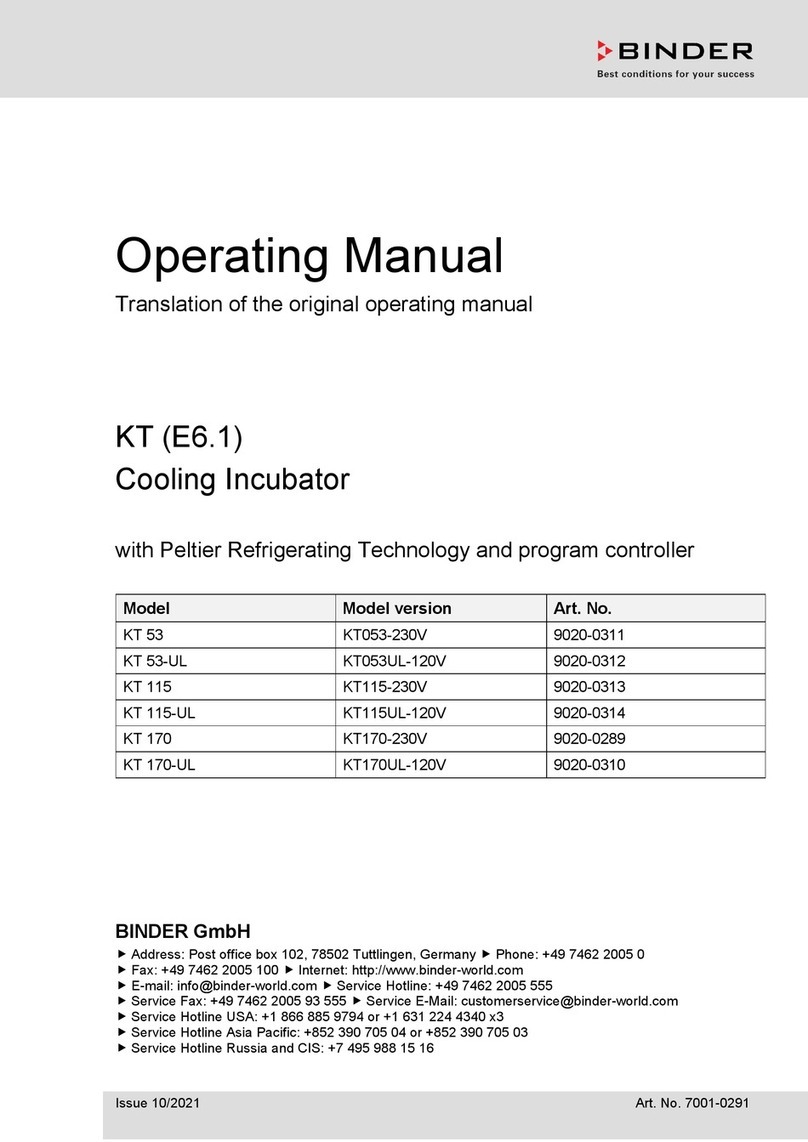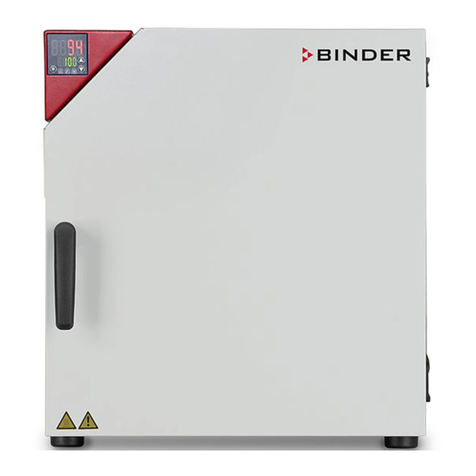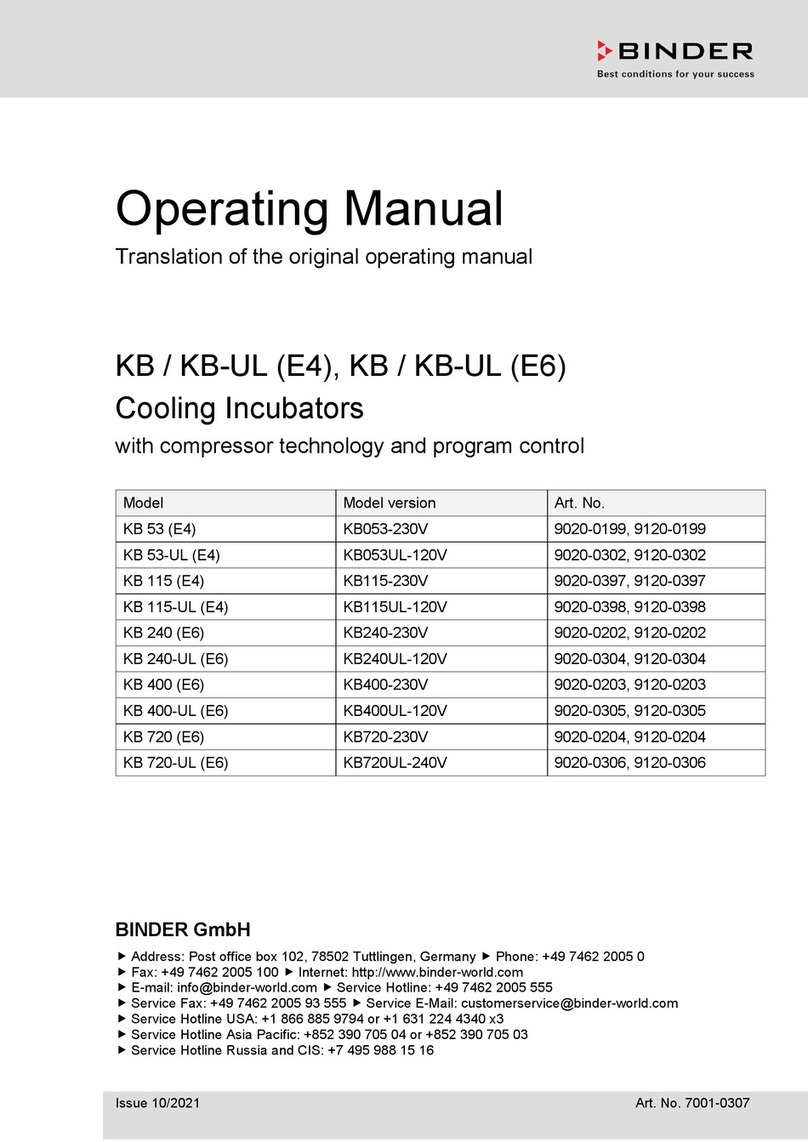
C 150 (E2) 06/2011 page 5/78
8. CONTROLLER RP1 SETTINGS..........................................................................36
8.1 Altitude of the installation site above sea level .................................................................................36
8.2 Entering the set points of temperature and CO2...............................................................................38
9. TEMPERATURE SAFETY DEVICES...................................................................39
9.1 Over temperature protective device (class 1) ...................................................................................39
9.2 Safety controller (temperature safety device class 3.1)....................................................................39
9.2.1 Setting the safety controller set point type...................................................................................39
9.2.2 Setting the safety controller set point...........................................................................................41
10. ALARM FUNCTIONS...........................................................................................43
10.1 Alarm functions overview ..................................................................................................................43
10.2 Resetting the alarm messages .........................................................................................................43
10.3 Zero-voltage relay alarm output........................................................................................................44
10.4 Safety controller temperature alarm..................................................................................................45
10.5 Temperature tolerance range alarm (high and low temperature).....................................................45
10.6 Door open .........................................................................................................................................46
10.7 CO2tolerance range alarm (CO2over/under concentration)............................................................47
10.8 CO2pressure too low........................................................................................................................47
10.9 Temperature sensor failure...............................................................................................................48
10.10 Failure of CO2sensor........................................................................................................................49
11. ERROR MESSAGES............................................................................................49
12. REFERENCE MEASUREMENTS ........................................................................50
12.1 CO2reference measuring .................................................................................................................50
12.1.1Measuring CO2concentration indirectly via the pH of the cell medium.......................................50
12.1.2Measuring CO2directly via chemical indicator tubes ..................................................................51
12.1.3Measuring CO2directly with an electronic infrared measuring device ........................................52
12.2 Temperature reference measurement ..............................................................................................52
13. OPTIONS..............................................................................................................52
13.1 Silicone access ports 30 mm / 1.18 in, closable with 2 silicone plugs (8012-0558 rear, 8012-0559
left, 8012-0560 right) (option)............................................................................................................52
13.2 Base on castors (option) ...................................................................................................................53
13.3 Stacking adapter for direct thermal decoupled stacking (option) .....................................................53
13.1 Analog outputs for temperature and CO2(option) ............................................................................53
14. AVOIDING MICROBIAL CONTAMINATION........................................................54
14.1 Cells and media ................................................................................................................................54
14.2 Laboratory conditions / equipment around the incubator .................................................................54
14.3 Working and behavior in the lab .......................................................................................................54
14.4 Chamber design and equipment of the CO2incubator C 150 ..........................................................55
14.5 Handling the CO2incubator C 150....................................................................................................56
15. CLEANING, DECONTAMINATION / DISINFECTION, AND STERILIZATION....57
15.1 Cleaning ............................................................................................................................................57
15.2 Decontamination / chemical disinfection...........................................................................................58
15.3 Disinfection of the CO2sensor..........................................................................................................59
15.4 Hot-air sterilization at 180 °C / 356 °F ..............................................................................................59
15.5 Aborting the hot-air sterilization ........................................................................................................62
15.5.1Aborting the hot-air sterilization manually....................................................................................63
15.5.2Aborting the hot-air sterilization by opening the outer door.........................................................64
15.5.3Aborting the hot-air sterilization using the main power switch.....................................................64
